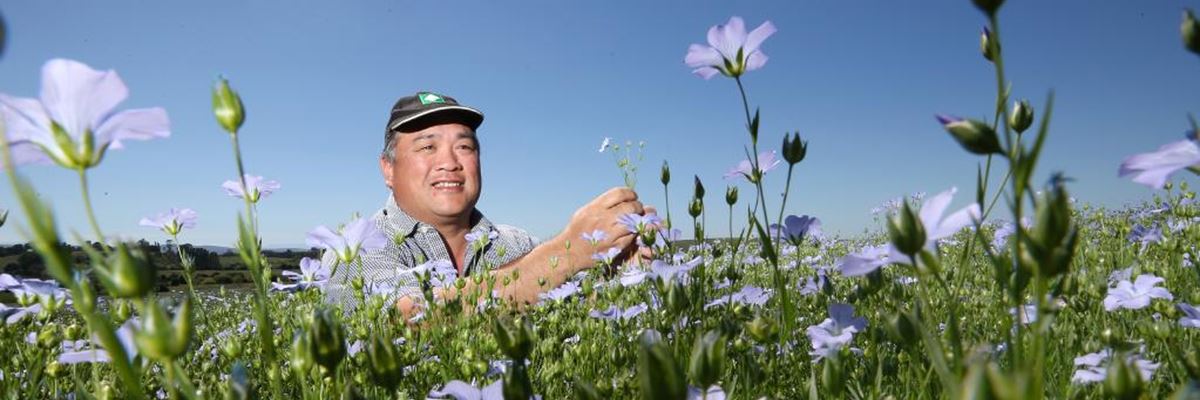Tasmanian-grown linseed a true blue growth crop
24 November 2017
Research & Development
From the company’s beginning, one of its main priorities has been a focus on research to help secure the futures of both the company and their farmer clientele.
Work for us
Enquire about joining the Midlands Team.
24 November 2017

INCREASING demand for Tasmanian-grown linseed has seen a big increase in the crop this season.
Midlands Seed is growing about 400ha of linseed across properties in the North and will supply about 1000 tonnes of linseed to a major customer.
However, further inquiries for supplies of another 2000 tonnes could soon see the crop area expand.
Midlands Seed field consultant Konrad Chung said Tasmania’s reputation as a reliable supplier of good quality linseed was fuelling the demand.
“It’s quite exciting to see all these orders coming in. Potentially we could soon be growing up to 2000ha.”
To help meet demand the company has introduced three new varieties to the state that perform well in Tasmanian conditions.
Wintalin is a winter variety, which can be sown in autumn and grown in dryland conditions. They are also using two spring-sown varieties, Bilton and Bowler.
Bred in the Netherlands, the company imported a few grams of these varieties and has spent the past five years getting them up to commercial quantities in New Zealand.
Mr Chung said yields of the new varieties last year were higher than expected. The best cleaned yield of 3.5 tonnes per hectare was grown on the North-West Coast.
This year they hope to produce four tonnes a hectare by adjusting crop management, irrigation and by using plant growth regulators to reduce the crop height.
Linseed grown by the company is mainly used for human consumption in products such as bread.
Linseed is a low-input crop, similar to oats and Mr Chung said an added advantage was it was also a handy break crop in rotations and could be help control grass and broadleaf weeds.
James Clutterbuck has been growing linseed for a number of years on his property Summerhill Farms near Hagley and has been achieving good results.
Despite the current dry conditions his dryland crop planted in June is performing well and Mr Chung said harvesting was planned for the end of January.
"It’s quite exciting to see all these orders coming in. Potentially we could soon be growing up to 2000ha."